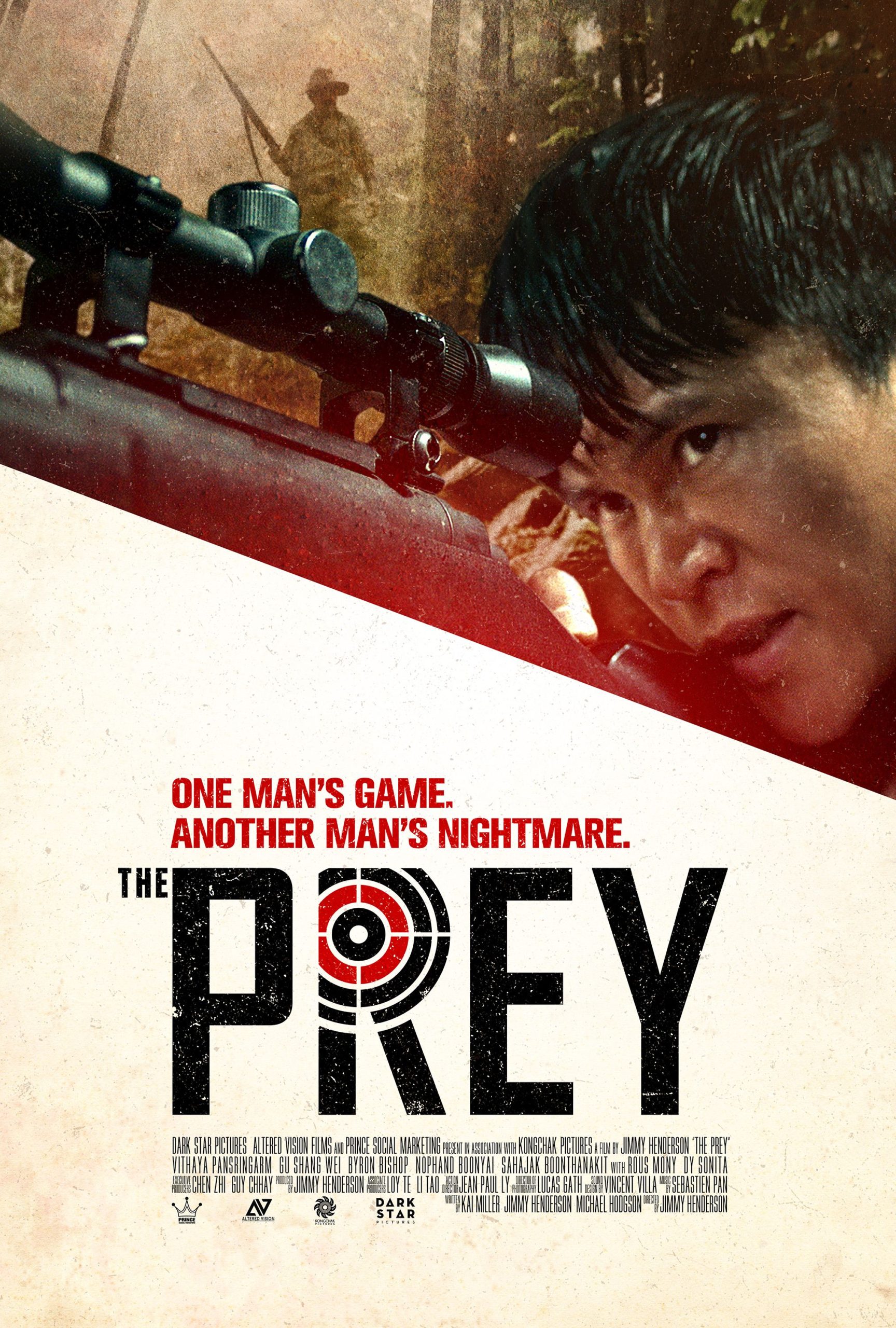
Filmmaker Jimmy Henderson (Credit: Dark StarPictures)
Interview by Ronald Blake / THE A.A.V.E.
RB: Many indoor scenes have great natural lighting (windows, doors, cracks) which helped add to the suspense of those scenes. Was this done on purpose or did it just come together naturally once you got on location?
JH: When me and Lucas, our cinematographer, started to discuss the visual approach of the film, we knew we had to make good use of natural light as most of the film was taking place outdoors. We knew it was very difficult to bring big lights in the middle of the jungle so I would block a scene based on where the sun was at that time. We also used a lot of smoke in the background to give atmosphere to the jungle.
RB: “Now I am the tiger, and you are the prey”. The predators were also the prey, and vice-versa throughout the film. Was there any message, relative to today or society, that you were trying to get across to the audience with the film?
JH: You could definitely see it as an analogy to our society. Success, power and the social status that surrounds a person can easily corrupt the relationships of that individual, turning someone into a predator. The more power is held the harder it is to control it. But we have seen in recent years how predators are becoming less and less untouchable. Eventually, society will rebel against the world of injustice that they have created. And ultimately, the hunt will turn against them.
RB: Mr. T is one sick individual and was a great antagonist to not just Xin, but all other characters in the film as well. How did you come about creating his character.
JH: To me Mr. T represents the failure of modern indoctrination, which dictates your social status defines who we are. He’s the prodigal son of this concept, gone nuts. He comes from an extremely rich family. His father pressured him to follow in his steps, but something got lost on the way. Too much abundance left T with a lack apathy for life.
Amongst the two other hunters, is only one that has nothing to prove to himself. He just came to the hunt cause his Uncle Mat thought it was a good idea to bring him along to get some fresh air. I told Nophand, the actor that plays T, that I needed him to interiorize his feelings for most of the film, let them boil inside his head waiting for the right moment to explode. He did a great job with the character and his theatre background definitely helped bring this to the screen.
(L-R)Rous Mony, Gu Shangweiand & Filmmaker Jimmy Henderson-THE PREY (Credit: Dark Star Pictures)
RB: The action in the film during fight scenes is very realistic and fast moving. It makes you feel as if you are right next to each character during some scenes. What made you choose these types of moving action shots and were there any actors who performed their own stunts?
JH: I had to keep the action coherent with the rest of the narrative. So we adopted a style that tonally fit with the rest of the film. In the previous action films I made, I normally shot with a wider lens, as it allows me to follow the dynamics of the fight with an easier flow. With The Prey we went tighter, in order to achieve an elevated immersive feeling and to keep the cinematography consistent. All the actors that did fight scenes or stunts had prior experience.
RB: There are some breathtaking outdoor cinema shots that include both aerial and ground shots in the jungle. How long did it take to scout locations and were there any major challenges shooting in those elements?
JH: We started scouting at the end of the rainy season and we started shooting at the beginning of it. A lot of places had changed when we got back.
It was very difficult to know what the weather was going to be like. I had to change a good number of scenes on the spot and adjust the storyline because it was suddenly raining. We planned to do a swimming chase scene during pre-production. We checked the level of a waterfall and filmed some pre-visualization. It seemed doable. But once we went back, during production, the water level had drastically increased and it was impossible to pull off the same stunt.
RB: When you were casting for the film were there any specific things you were looking for from each actor to create the chemistry on screen that we see?
JH: I knew Vithaya from a film I helped produce in Cambodia years before. We waited for the right opportunity to work together and it happened. I asked him if he had some other actors to recommend and I got to meet Sahajak, Byron and Nophand. They were already good friends in real life so there was definitely a strong chemistry between them. Gu Shangwei was sort of an outsider, which I think suited his role. I directed him through a translator. And as for the rest of the local actors, I have worked with them in previous movies and we had a strong connection so we knew what to expect from each other.